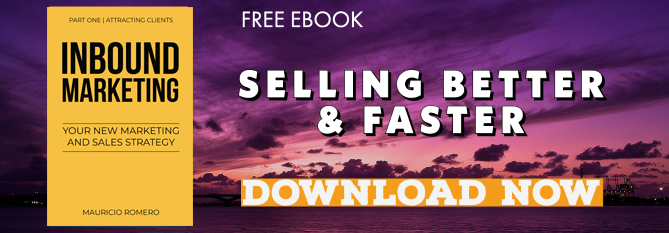
We all know that the content that we publish on our company's website is key for an Inbound Marketing strategy. We also know about the benefits of creating a blog for a company but, How to write a blog? Where to start?
Yes, we know technology allows us all to publish whatever we want, whenever we want and wherever we want, and that the personal signature of each one of us is always present in what we write yet, there are always certain guidelines that we all might want to follow when writing a blog post. Let's cut the chase:
Steps to Write a Good-Quality Blog Post
1.- Before writing the blog post: research
We always advise to do a little research before going straight to the writing of the post. Even if you already know something about the topic you are going to write about, getting more and new ideas on the topic will enrich your text and give you more confidence when writing. Try to find the information shares new information and summarize its main ideas. Categorize this information.
For example, if you are going to write about the mass media and you have a lot of information about it, you must first read all this information and then choose the material that is most relevant for your article. Are you going to talk about all the media or just an specific one? About its history? About its present? About how it has changed with the passing of time? About its future? About information technology and mass media? About who is exposed to what means? Statistics on media? Narrow your topic down and focus your search according to what you want to convey.
All information is valuable so, what you are really looking for, is to rescue that information that matches the purpose of your blog and nothing else. Of course, you will definitely find a lot of important information related to your topic it doesn't necessarily have to be included in this particular blog post that you are going to write. Maybe you should save that information for a future blog post (congratulations! you got yourself more ideas for other blog posts) and focus on the information that your particular blog post requires for now.
Once you've done your research and have the information that you need, you can:
2.- Make a draft
You already have enough information to back what you are interested in transmitting to your reader. It is now time to organize these ideas, categorize them. It's like making the index of a book, but adjusting it to a blog post. In other words, the draft is your ideas map. It is perhaps the most important part of the work because you will base your article on it in order to give it some logic and coherent organization to the ideas. Once you do this, the rest will be much simpler.
What to include in a draft?
- Introduction- What are you going to talk about? What do you know about the subject in broad strokes? Why should your blog interest people? What is special about it? Going back to our mass media example, we could start with something like this: "The magazine -insert expert journal's name- points out that the mass media has been changing over the years. They did not exist 30 years ago as we now know them and they will probably have evolved completely into something new in the next 30 years. Do you want to know more about these historical changes in the mass media? Keep reading!" In this introduction we find:
- Expert and reliable information: An expert magazine on the topic.
- What you are specifically saying about mass media: historical changes. (Not kinds of mass media, or the relationship between mass media and politics, for example)
- Reason to be interested on the article: You are using this media! Wouldn't you like to know where they come from and where they are headed?
In just a few lines, you have shared enough information for your reader to trust your article and be interested on it.
- Body- Now, what do you want to say? Separate it by categories, by subtitles. The more orderly and pleasing the look of your blog, the friendlier it'll be for your reader. Remember that your readers do not want to spend the whole afternoon in front of their computer reading super-long articles, specially if they do not add anything new to them. Go to the point, be clear, and above all, make sure that your article has a main idea or an argument that can be followed all along the post, do not beat around the bush. Back to our The History of Mass Media example, the order that your argument should follow could be: pre-historic times, old age, modern age and present of the media. Each sub-topic should be a subheading that includes its own main ideas, diagrams, lists, etc ...
- Conclusion- You have several options to give a good closing to your article. You can not leave your reader "halfway". There are several types of conclusions:
- A brief summary and your opinion on the topic
- Highlight problems and/or offer possible solutions that have not been thought of yet
- Think about the future of your topic and suggests possible innovations or developments
- Question the relevance or importance of your topic.
- Ask your reader to dare and experience this or that (related to your topic).
So, it is not only a question of repeating what you have said, but of giving it a closure and going a little further (in just a few lines).
Wrapping "Write a Draft" up
Returning to our The History of Mass Media example, the draft of your whole article could look a little like this:
- Introduction- Context of the mass media today (based on reliable sources) and their importance
- Body-
- Pre-historic times- smoke signals
- Old age- Letters
- Modern age- Phone, telegrams
- These days- Internet
- Conclusion- Current state of mass media, possible future, new questions, solution to mass media problems, your opinion on the matter, an invitation to try an specific kind of media... choose one!
3.- Writing the article, developing the ideas mapped on your draft
You now have your draft so it is easier for you to develop each idea coherently, without getting lost with unnecessary information. Write as if you were explaining it to a person who does not know ANYTHING about the subject, so that you are clear. We many times take for granted that people know what we are talking about but that isn't always the case, specially when it comes to very specialized topics. Going to the point doesn't mean that you shouldn't be clear.
4.- Editing
Once you have finished writing your blog post, you might want to re-read it and edit it when necessary. Don't do it right away! Give it some time and let it "rest". If you review it right away, you may not be able to see your own mistakes. Come back later and review it carefully: writing, spelling, other ways of saying things. Read it as if you were a reader who knows nothing about the subject... is it clear enough? that is, have you said it clearly or is it somehow confusing? If you are not good at writing itself or/and on spelling, try having someone else read it and correct it for you. It is always better (thank your editors!) to have another set of eyes to read what your write and thus, help you improve it.
5.- SEO
Finally, writing a blog as an Inbound Marketing strategy, means that we must check on one last aspect that is not usually present in other kinds of blog posts: Search Engine Optimization (SEO). You must pay special attention to what search engines use as a guideline to index their answers: meta-descriptions, keywords, alt + text of images, headings, topic-cluster, among others.
You are all set! You've finished your blog post. Congratulations! Do now forget that writing a blog for your company is only one of the many Inbound Marketing strategies. Writing blogs without them being part of a whole strategy might catch your visitors interest, but you don't want just to attract readers (not with this kind of blog post), you want your writing efforts to go beyond and become a part of a marketing strategy that will actually mean benefits for your company.

DataBranding, an expert Inbound Marketing agency, offers its services which can go from a simple consultancy service to the whole support given when planning marketing campaigns and their monthly follow-up. Contact us, our success is your company's success!

 Paulina Romero H
Paulina Romero H
